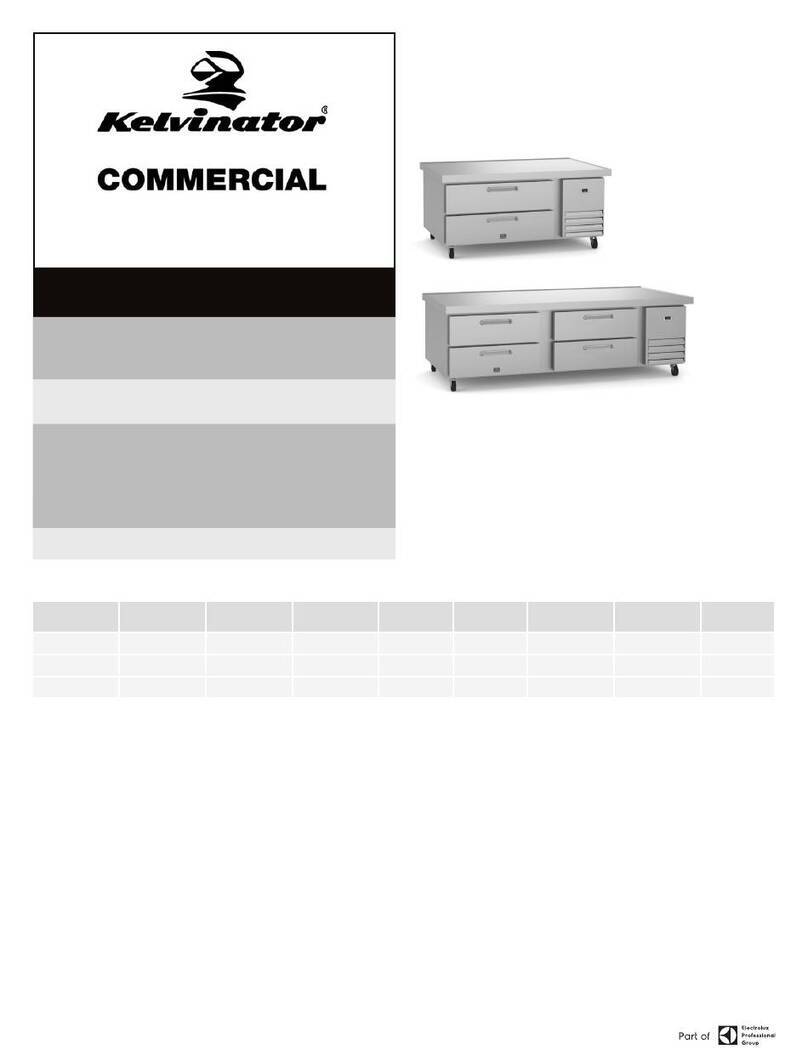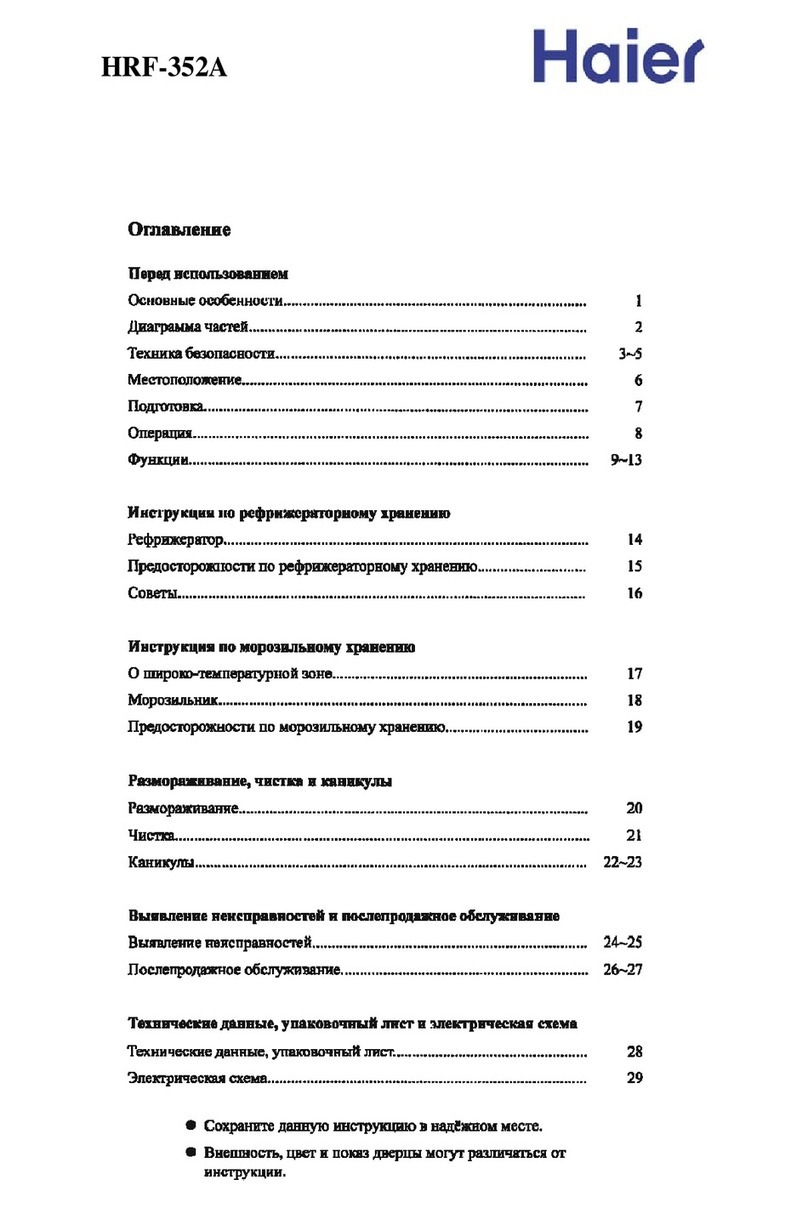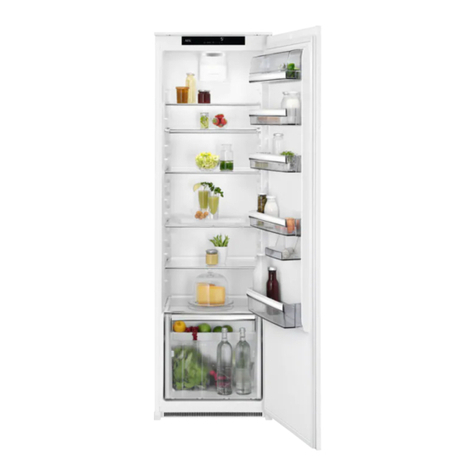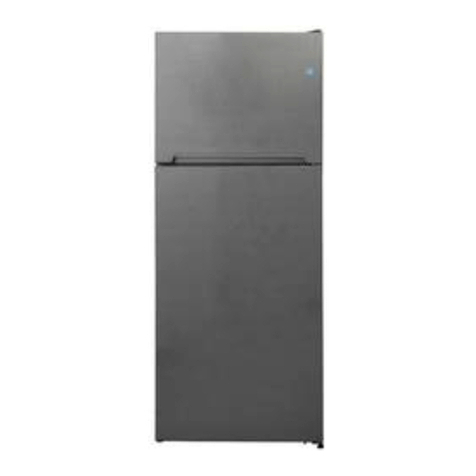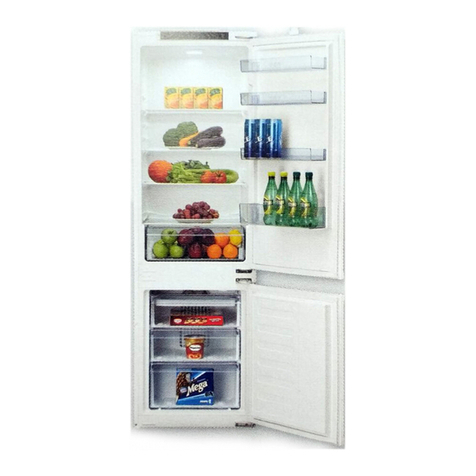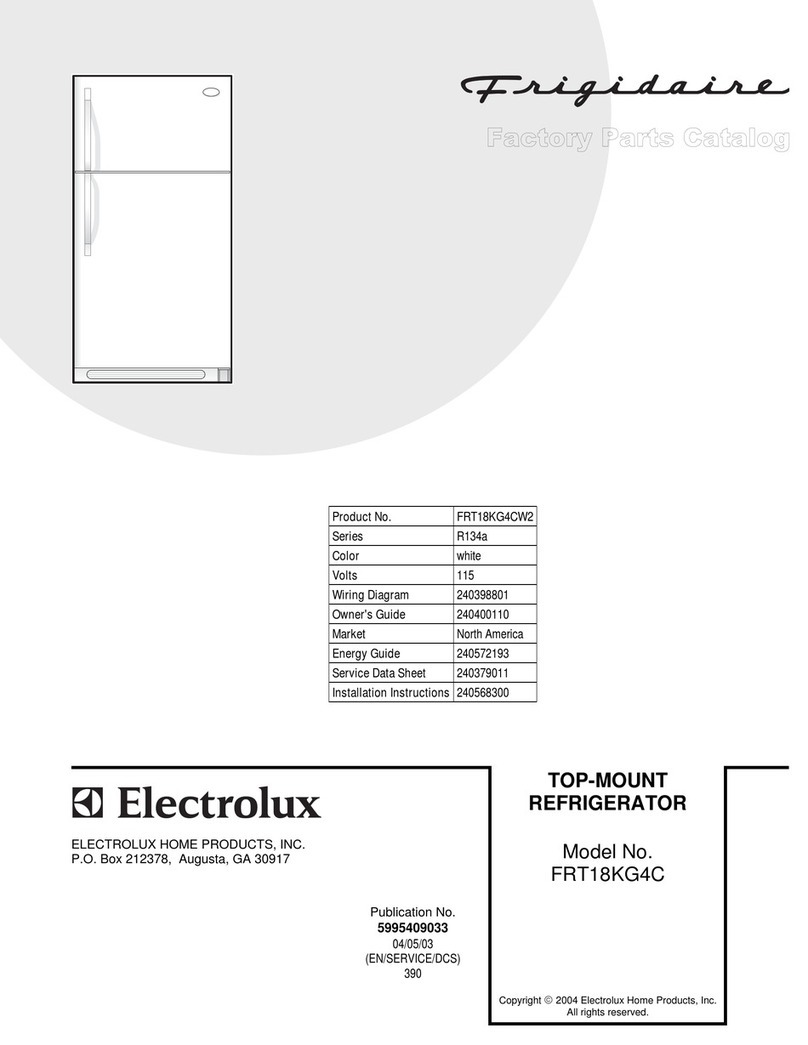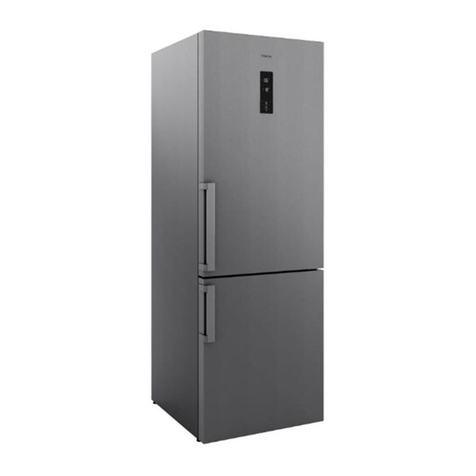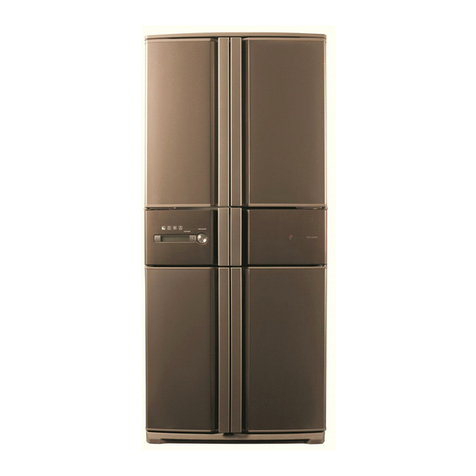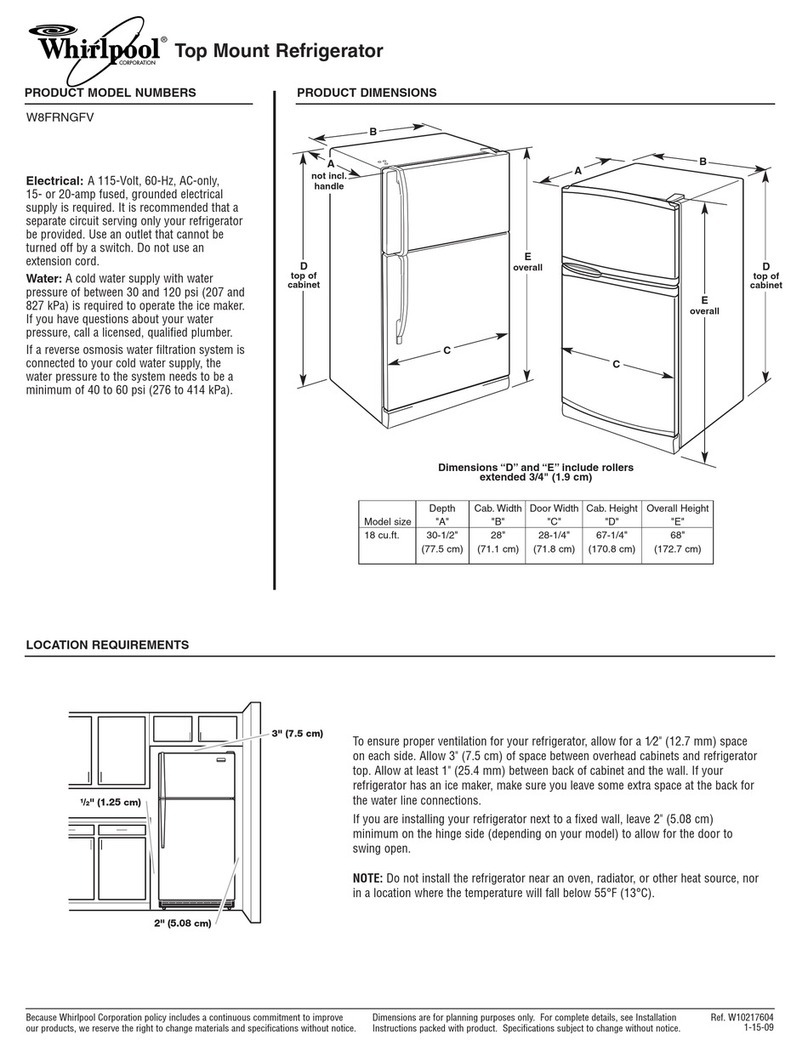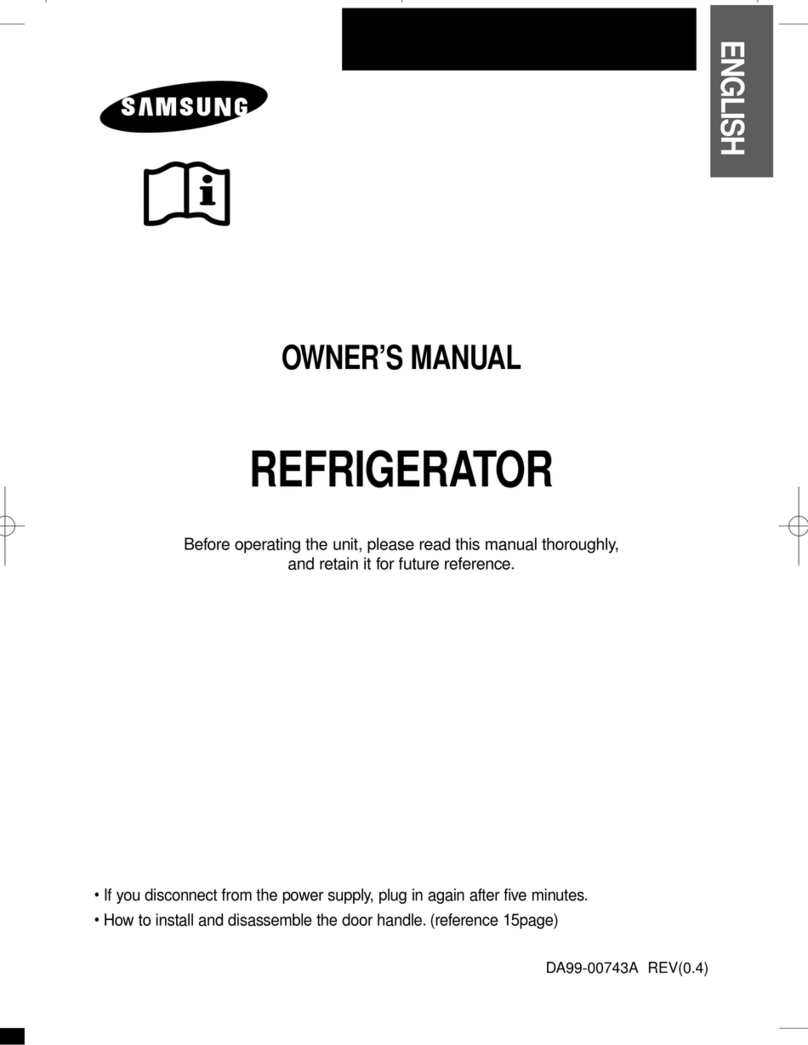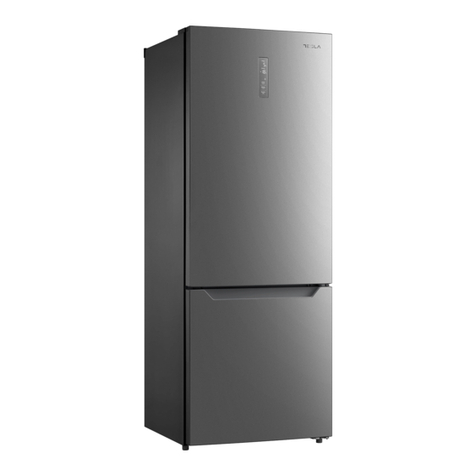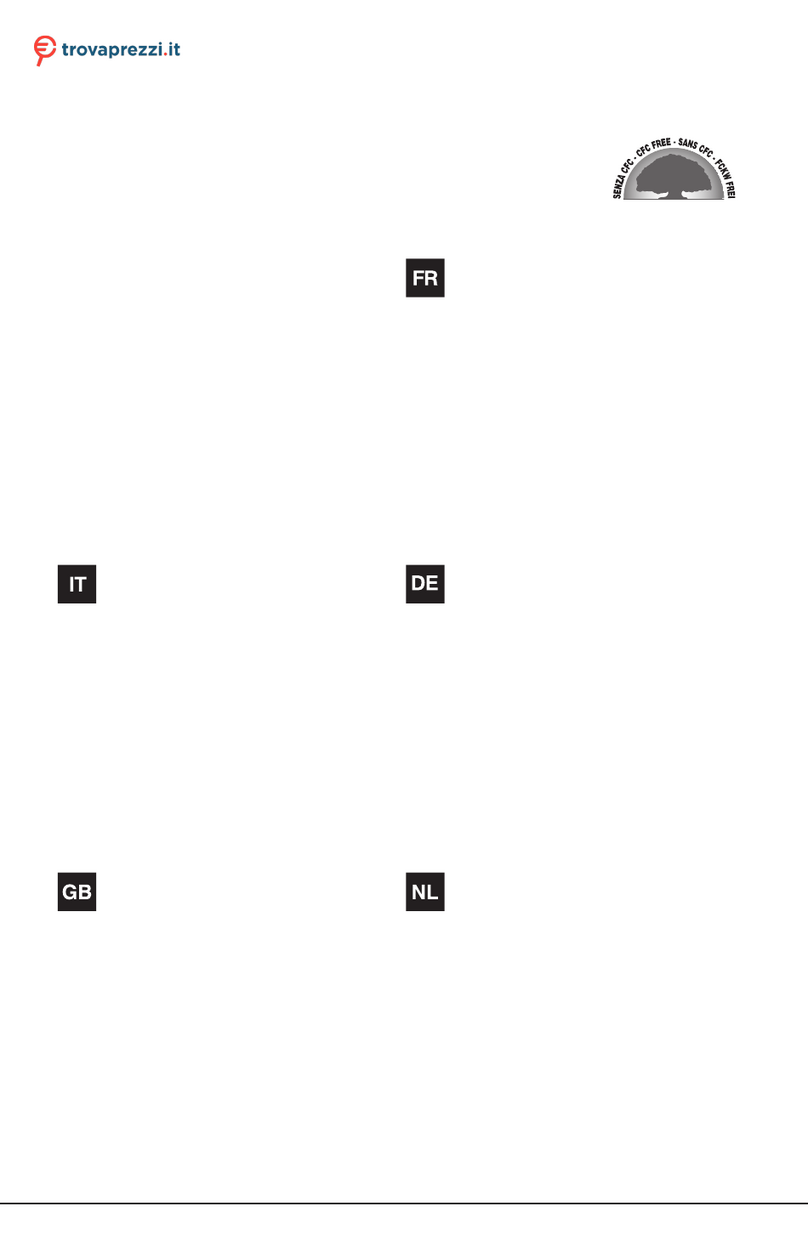Indel Webasto Isotherm Drawer 190 Manual


Installation & operating instructions
Table of contents
1 Introduction
1.1 General
1.2 Safety and precautions
1.3 Environmental markings
2 Operation
2.1 Temperature setting thermostat
2.2 User tips
2.3 Defrosting
3 Maintenance
3.1 Battery voltage sensor 4 Installation instructions
4.1 Ventilation
4.2 Door front
4.3 Electrical connections
4.4 Electrical wire dimensions
4.5 Inner light
4.6 Wiring diagram
5 Technical data
6 Trouble shooting
7 Installation dimensions

1. Introduction
1.1 General
Isotherm refrigerators are specially
designed to operate in tough marine
environments. They are fitted with a fully
hermetic, leak-free compressor; they offer
the lowest possible power consumption and
noise level. All models are simple to install.
They can withstand an angle of heel up to
30°, for a short time. To ensure that your
Isotherm fridge operates as efficiently as
possible, please follow these general
guidelines:
Unnecessary opening of the fridge
door will increase power
consumption.
Good ventilation of the compressor
and condenser unit will reduce power
consumption.
The electrical system should be in
good condition. Inspect batteries and
charging levels regularly. Always use
a separate starter battery for the
engine. Follow carefully the
guidelines regarding electrical cable
areas and fuse placements.
Keep the inside of the fridge and
freezer clean and dry. Remove any
water from condensation that may
have collected in the drip tray.
Keep the door slightly open to air the
refrigerator when leaving the boat for
any length of time.
Clean the inside of the refrigerator
with lukewarm water and a mild
detergent before taking the fridge
into operation the first time.
1.2 Safety and precautions
For your own and others safety, read this
first.
Danger! When connected to mains power,
ensure that the power supply is equipped
with an earth safety automatic switch, a
”ground fault circuit interrupter”.
Danger! Never touch bare electrical wiring
connected to the AC power supply. Do not
use the device if the connector cables show
visible damage. Never connect battery
charger direct to the refrigeration system. A
battery charger must be connected to the
battery, never direct to the refrigeration
system.
Danger! In addition to acid, a newly-
charged battery contains explosive gas.
Never cover the ventilation openings for the
compressor unit. Refrigerant may never be
let out in the air. Repair of the refrigeration
circuit must be done by a certified
technician.
1.3 Environmental markings
This appliance is marked according to the
European directive 2002/96/EC on Waste
Electrical and Electronic Equipment
(WEEE). By ensuring this product is
disposed of correctly, you will help prevent
potential negative consequences for the
environment and human health, which could
otherwise be caused by inappropriate waste
handling of this product.
The symbol on the product, or on the
documents accompanying the product,
indicates that this product may not be
treated as household waste. Instead it shall
be handed over to the applicable collection
point for recycling of electrical and
electronic equipment. Disposal must be
carried out in accordance with local
environmental regulations for waste
disposal. For more detailed information
about treatment, recovery and recycling of
this product, please contact your local city
office, your household waste disposal
service or the shop where you purchased
the product.

2. Operation
The refrigerators are made for use at
ambient temperatures between 0°C/32°F
and +42°C/107°F.
2.1 Temperature regulation thermostat
The refrigerator is fitted with a manually
operated thermostat. This is turned clockwise
to reduce temperature and anti-clockwise to
both increase temperature and activate the
on-off switch at the end position, 0-position. A
certain spring resistance is recognized at the
off position. It is advisable to start with the
thermostat in a medium position. It is
advisable to keep a temperature of 5-6°C/ 41-
43°F inside the refrigerator. Higher
temperatures will reduce storage time. The
ambient air temperatures also influence the
temperature inside the fridge. Avoid direct
sunshine and other heat sources close to the
refrigerator. The thermostat control knob is
placed inside the refrigerator.
2.2 User tips
- Load the food inside the refrigerator in such
a way, air can circulate to equalize the
temperature.
-Do not cover the shelves with glass, paper
etc.
-To reduce the amount of ice building
up in the evaporator, cover all liquids
and moist food.
-Let all hot foods cool well before putting them
into the refrigerator.
2.3 Defrosting
The evaporator is working on below freezing
temperatures and will form frost and ice from
humidity in the air. The humidity increases
with higher outside temperature, with storage
of non sealed fresh food and liquids and the
time the door is kept open. Defrosting shall be
made when the frost layer is more than 4 mm
/ 1/8” thick. Set the thermostat in OFF position
or switch off on the ASU control panel. Store
the foodstuff and the liquid as cold as possible
during the defrosting process.
Do not use sharp metal tools to remove frost or
ice. Do not re-start until the refrigerator is
completely defrosted, cleaned and dried. Empty
and clean also the plastic drip tray below the
evaporator. Place towels in the bottom of the
refrigerator to collect melt water.
3. Maintenance
The Isotherm DR Refrigeration systems
have a fully hermetic closed cooling system
and do not require any maintenance or
refilling of refrigerant. The compressor is of
mobile type and has a very high efficiency
and an outstanding life-time. The
refrigerator shall be left in the boat during
the winter. (If the temperature is below
freezing point, the compressor may not
start). The maintenance is reduced to
periodically, not less than a year, cleaning
of the condenser from dust. Use a soft
brush and no sharp tools. Keep the cabinet
inside clean. Use lukewarm water and a
mild detergent for cleaning the inside. Put
the doors, during not in operation periods,
in their slightly open ventilation position.
3.1 Battery voltage sensor
To protect the batteries from becoming
completely discharged, a battery voltage
sensor switches off the compressor
automatically at the following levels:
System
voltage V Cut out V Cut in V
12 9.6 (10.4) 10.9 (11.7)
24 21.3 (22.8) 22.7 (24.2)
If the bridge between C and P is cut off,
values within the () are valid.
4 Installation instructions
Many boats have a space which is intended for
a fridge. The Isotherm Cruise fridge has been
designed to suit the general dimensions
normally used for this purpose. The compressor
should normally stand upright in the boat, but
will operate at an angle of heel up to 30° and for
short periods even more. The INOX type
refrigerators have a flush mounting frame, three
side frame, as standard.

4.1 Ventilation
It is very important that the compressor/condenser
unit is well ventilated and that cold air can enter at
the bottom, pass behind the fridge and warm air
can leave at the top in the area where it is
mounted. The natural flow of air from below and
upwards behind the fridge can be increased by
arranging ventilation openings at the rear. Make
sure there is a free area of 100-150 cm² / 15
-23 sq.in. below and behind the refrigerator to
allow ventilation air to pass behind from below.
Example:
4.2 Door front panel
The INOX models have doors in stainless steel
and do not have exchangeable door fronts.
4.3 Electrical connections/wiring
When connecting the refrigerator electrically, it
is important that following points are
considered: Always use cables of sufficient
area. The area in the following table should be
regarded as a minimum.
Always connect the refrigerator directly
to the battery or to the battery main
switch on the plus circuit. Do not
connect it via the boats own control
panel or other diversions as this can
cause a voltage drop in the power
supply. Use the included fuse holder
with a 15A fuse. Use 7.5A fuse in a 24
volt system. The fuse shall be mounted
on the plus cable.
Connect the red cable to the positive
(+) terminal and the black to the
negative (-) terminal. Use tab type
terminals for the connection to the
electronic unit and other cable
connectors of sufficient size for the
cable size selected.
Do not connect the refrigerator direct to
a battery charger. The battery
charger must be connected to the
battery.
4.4 Wire dimensions
4.5 Inner light
The refrigerators have inner light (LED)
mounted in the top of the cabinet.

Drawer1905A
@
Drawer1901.5A@12V
DanfossBD50

7 Installation Dimensions
Table of contents
Other Indel Webasto Refrigerator manuals
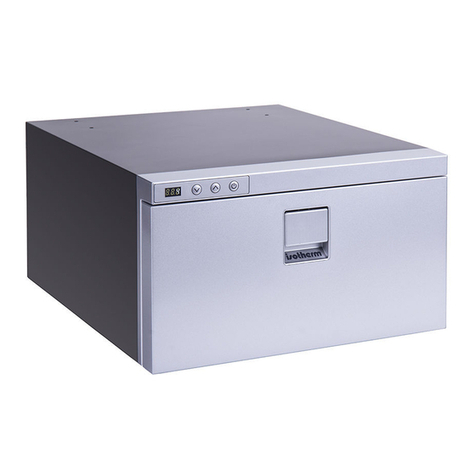
Indel Webasto
Indel Webasto isotherm DR16 Setup guide
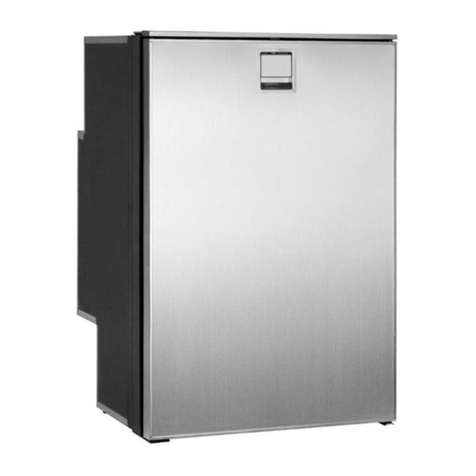
Indel Webasto
Indel Webasto Isotherm Freeline 115 User manual
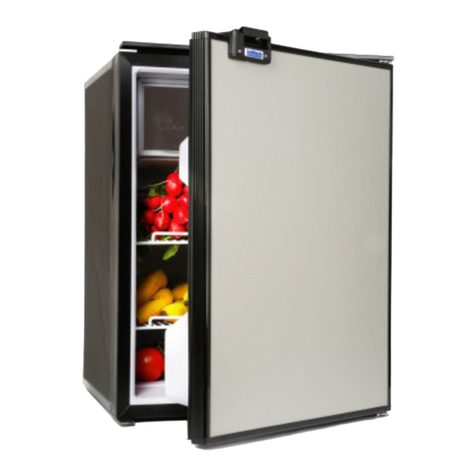
Indel Webasto
Indel Webasto Isotherm Cruise Classic Setup guide
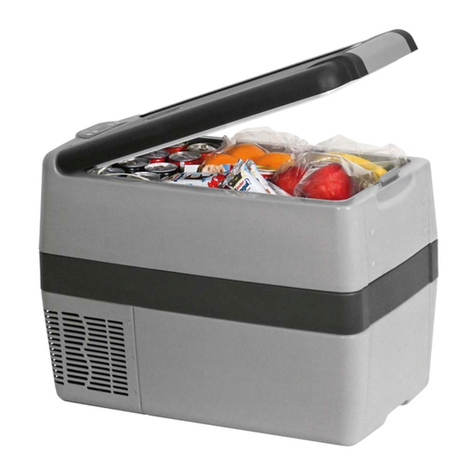
Indel Webasto
Indel Webasto isotherm TB 32 User manual
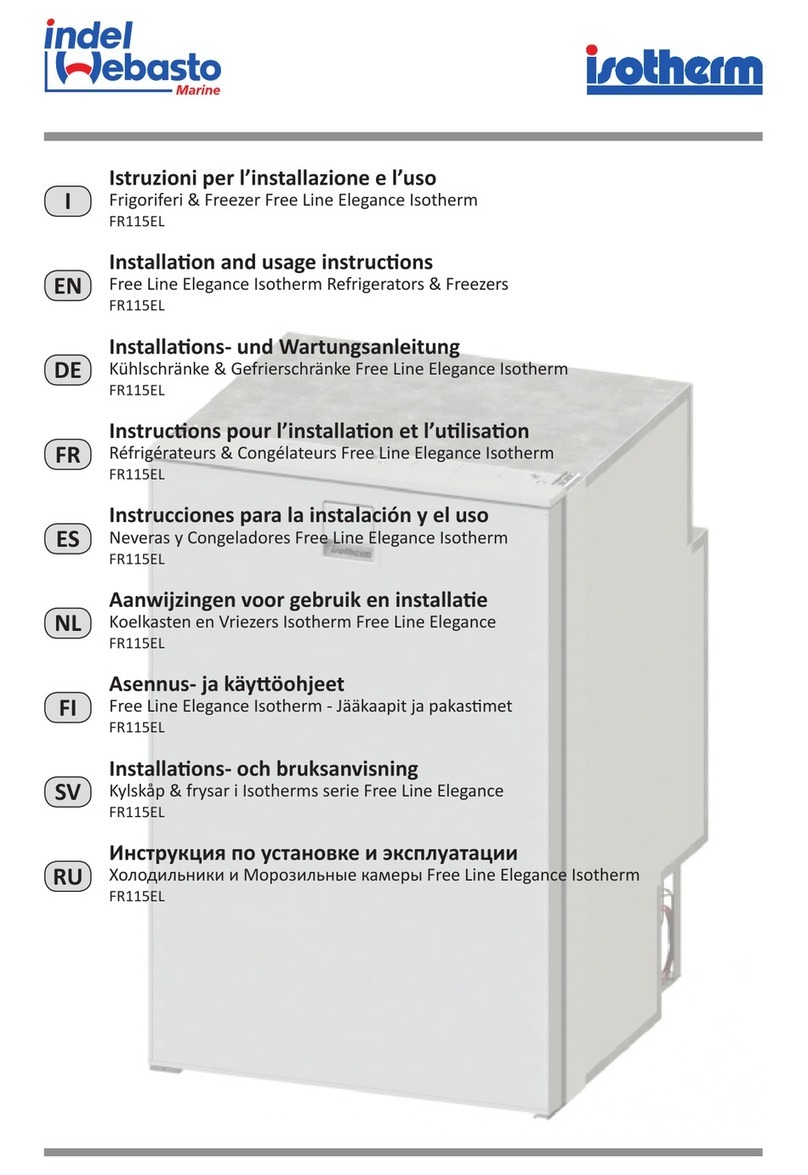
Indel Webasto
Indel Webasto Free Line Elegance Isotherm FR115EL Setup guide
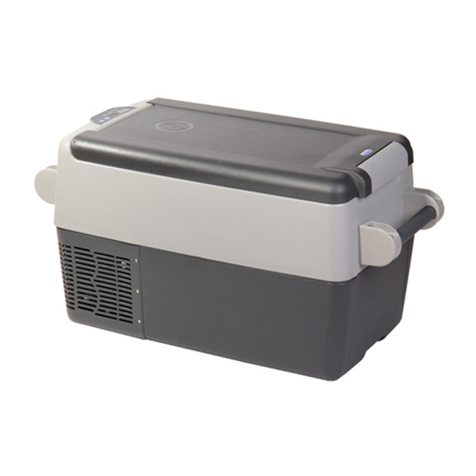
Indel Webasto
Indel Webasto Isotherm TB31 User manual
